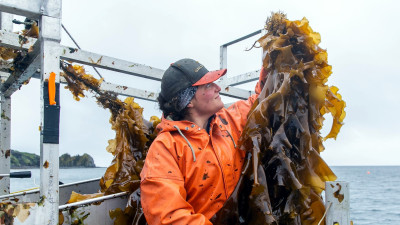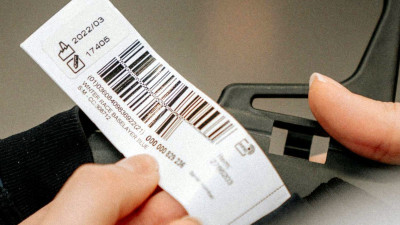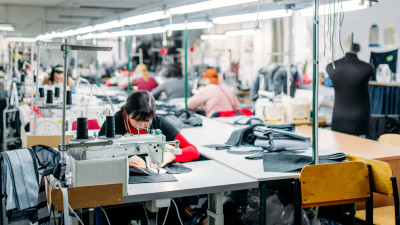A collaborative, network approach is helping global companies meet their suppliers where they are and ensure they have the resources and know-how to rise to growing imperatives to reduce climate impacts.
Making the Dream Work:
Equipping Suppliers for the Climate Action Journey
Mitigating scope 3 emissions is one of the most sobering challenges for global businesses. It’s also an area ripe with possibility for rapid and scalable change. Large corporations are poised to collectively drive significant climate action by engaging their suppliers to reduce carbon emissions across their supply chain, but where do they begin?
During Climate Week, The Estée Lauder Companies (ELC), Supplier Leadership on Climate Transition (S-LoCT) and creative agency Tag discussed why reducing wide-ranging emissions across supply chains is essential to meeting climate goals, and how educating and supporting suppliers is critical to making the most of the “decade of action.”
With a presence in over 150 countries, ELC is using its scale to advance climate action across its supply chain; the cosmetics giant says it has made significant progress toward its science-based goals, particularly regarding scope 1 and 2 emissions. Like other companies, though, ELC has found that scope 3 — that pernicious monolith outside an organization's direct control — is where the real emissions-reduction challenge lies (95 percent of ELC’s emissions are scope 3).
The company solicited feedback from its suppliers on what challenges they faced in meeting emissions-reduction targets, and it was remarkably similar: Across the supply chain, there’s a know-how and resources gap. ELC’s suppliers needed help with climate literacy and accessing tools to set and meet climate goals.
Strategies & Tactics for Driving Behavior Change at Scale
Join us on Thursday, June 5, as leaders from Booking Holdings, Intuitive AI and Parallel Labs dive into the latest communications strategies driving sustainable travel habits, eliminating waste in crowded venues and building internal organizational engagement — at SB Brands for Good!
To this end, ELC brought 50 of its suppliers into S-LoCT — an offshoot of the consulting firm Guidehouse facilitating climate training for supply chains. S-LoCT is a plug-and-play approach to supplier education and action, guiding suppliers through different tracts designed to educate and inspire climate action. Guidehouse’s S-LoCT program works with the top 40-50 suppliers in a company’s supply chain, cross-referencing each supplier to check if it’s already gone through the program.
This network effect is powerful, said Meghan Ryan, Executive Director of Responsible Sourcing at ELC. S-LoCT’s universal verification process allows brands to “share” suppliers and swap in ones that have already gone through the program.
“When we think about scale and the urgency of the challenges ahead of us, coming together is the fastest way for us to reach the maximum number of suppliers, because we do have many that are shared,” she said.
One ELC supplier in the S-LoCT program is Tag. The agency was in the process of grappling with policies, systems and management techniques to address its emissions. As Tag Sustainable Sourcing Manager Kate Jolly attested, upward and downward support are important for those companies sitting in the middle: S-LoCT helped them double-check work, identify areas of improvement, and confirm areas where it's doing things right. Now, Tag is close to setting its own science-based targets; but some of ELC’s other suppliers don’t even know how to calculate their carbon footprints. The S-LoCT program helps them make incremental steps in identifying impact, crafting science-based targets, and embedding meaningful ways to drive change.
“All of these achievements we see as stepping stones to action, which is what we all need to see,” Ryan said. “This is an urgent time to see suppliers taking action. But we need the fundamentals in place.”
Making emissions reductions attainable for the rest of us
Frameworks such as the Greenhouse Gas Protocol and Science Based Targets Initiative are primarily designed for Fortune 250 companies; S-LoCT has retooled how they are taught and coached — making corporate-speak frameworks more attainable, accessible and engaging for smaller suppliers. Enlivening the mission through storytelling is essential for capturing the attention of consumers and suppliers alike. Good storytelling resurrects successful climate action from the doldrums of sustainability reports and elevates it to a national conversation.
“A lot of this stuff is really dry, and it can be really boring,” said Matt Banks, Associate Director of Energy, Sustainability & Infrastructure at Guidehouse. “It’s accounting; and you don’t want to make it feel like accounting, you want to make it feel like you're saving the world.”
S-LoCT also serves as a good barometer for supplier engagement — allowing brands to view their suppliers’ attendance record and homework status; and give the occasional nudge, if necessary. S-LoCT is also a hub of support connecting suppliers to commercial contacts and other help resources should they hit a snag.
Collaboration — a theme of Climate Week — is also a key component of the S-LoCT program. The network effect of a collaborative approach means self-correcting feedback loops, spurring organic progress among supplier cohorts.
Boosting supplier performance through guided action steps isn’t rocket science, Jolly said; but being surrounded by a network of supportive collaborators and peers is essential in tipping the balance. Clients such as ELC have a major role to play in engaging their brands internally and consumers externally.
Still, many companies haven’t put a firm line in the sand on science-based targets for suppliers — an issue that must be rectified if industry wants to be a part of saving the planet. That’s a sweet spot of an organization such as S-LoCT: Even if company A doesn’t demand emissions reductions from a supplier, company B likely shares the supplier and can incentivize it to change for all downstream clients.
Beyond expertise: Overcoming barriers to deeper collaboration
The barriers to deeper collaboration are lack of access to capital, lack of management attention and lack of expertise, Banks said. S-LoCT provides expertise, but most companies in its cohorts still need management and capital boost. He pointed to Johnson & Johnson’s capital relief fund — from which any of its 200 operating companies can draw to help with a climate project they want to implement.
There are many ways to influence a supply chain; and it can be too easy to break a potential collaboration by using a stick, instead of a carrot. It's easy to overwhelm suppliers with tons of action items and risk compromising a relationship; they often need more robust assistance in getting started on their sustainability journey. For both ELC and S-LoCT, starting somewhere — and doing so diplomatically — is the only way forward.
“You need those suppliers, so there’s this dance that needs to be done that must be done extremely carefully,” Banks said. “It has to be a diplomatic process, just like everything with climate change.”








